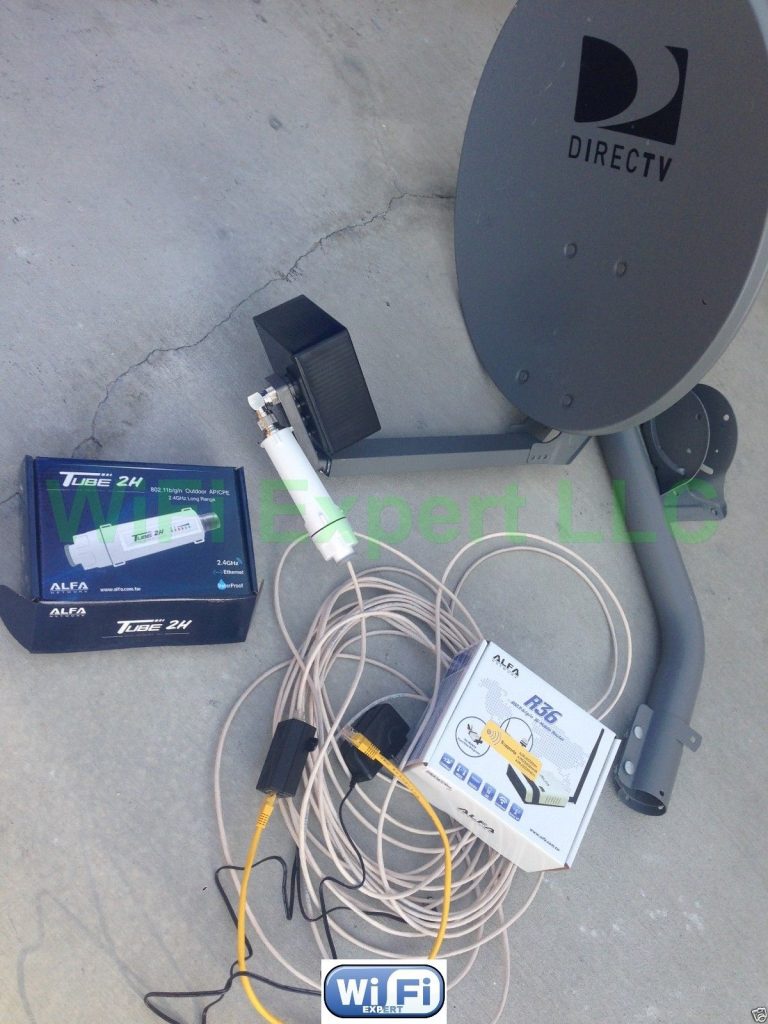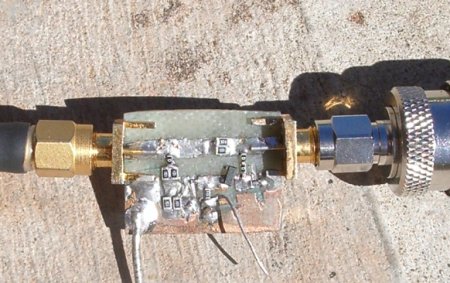About BiQuad Antenna calculator. The resource is currently listed in dxzone.com in 2 categories. The main category is 2.4 GHz Wifi antennas that is about 2.4 GHz Wifi antennas. This link is listed in our web site directory since Saturday Sep 15 2012, and till today ' BiQuad Antenna calculator ' has been followed for a total of 8108 times.
- Hence here is the Double BiQuad Antenna and BiQuad Antenna calculators for handmade antenna based on average data. However I highly recommend to follow my instructions, which are based on computer antenna simulation software 4nec2, to maximize performance.
- Following equation or formula is used for antenna range calculator. This page covers wlan range calculator or wifi range calculator this wlan range calculator takes frequency transmit power receiver sensitivity antenna gains fade margin as inputs and provides coverage range as output the formula for this wifi range calculator is also mentioned.
Parabolic wifi antennas are generally thought of asdish shaped objects, fed by a yagi, biquad or helical radiatorat the focal point.These dishes are curved in three dimensionsand involve considrable effort to construct from scratch.An alternative is the two dimensional 'linear focus' reflector. Itfocuses energy along a 'focal line' instead of one point, andworks quite well with simple dipole antennas.Design is as simple as selecting a suitable parabolic curve, plotting iton a flat surface, and fitting a sheet of mesh or solid metalto the parabola.
Doing the design calculations by hand is quite time consuming;there is excellent software enabling one to create a templateand in minutes. For doing the calculations, one good parabolic antenna calculator is HDL_ANT.Another very useful calculator, called Parabola,was designed originally for solar cooking, and can be used for making wifi network antennas. When using these, bear in mind that the f/D ratio (focal length /diameter) should be between 0.3 and 0.6 for optimal performance.
This linear focus parabolic wifi antenna consists of a sheet of metal shaped to precisely fit a two dimensional parabolic curve. Gain is about 15 dB over a dipole, and depends greatly on quality of construction.Of greatest importance is shaping the sheet metal to accurately follow the parabolic curve given in the template.Parts may be found at large hardware retailers such as 'Home Depot' or local scrap metal dealers.Versions of this antenna have been made using automotive sheet metal; othersuse wire mesh.Whatever the material: follow the curve!

This antenna can be built in a couple of hours and involves a fair amount of measuring,cutting, bending, and bolting metal.Use caution around the sharp edges when finished,put it up and enjoy a very durable antenna that provides great signals.
Parts & EquipmentRequired:
- one 36' x 2' aluminum flat (to be referenced asflat 'A')
- one 36' x 1' aluminum flat (to be referenced asflat 'B')
- one 14' x 36' sheet of aluminum flashing
- metal cutting shears
- a yardstick or tape measure
- three 6-32 x 3/4 machine screws (the long screws)
- two 6-32 x 3/8 machine screws (the short screws)
- five 6-32 machine screw nuts
- one drill with a 1/8' bit
- one fine point felt tip marker
- two clamps
- a pair of pliers
- a hacksaw
- Parabolic Template, printed as a poster (3 x 3 = 9sheets), carefully aligned and taped
A parabolic wifi antenna template, | Another parabolicwifi antenna | Rear view of the linear focus |
This antenna can be constructed in a couple of hours and some measuring,cutting, bending, and bolting metal.Use caution around the sharp edges. When finished,put it up and enjoy a very durable wifi antenna that provides longrange and high bandwidth connectivity.
AssemblyProcedure:
- Mark all flats and flashing from edge to edge alongtheir centerlines and across midpoints, both sides.
- Mark dots on flat 'A' along its centerline, at the1,' 18,' and 35' points. Carefully drill holes at thesepoints.
- Abeam the hole at the middle of flat 'A' drillholes on both sides, 1/2' inside of the edges. Thisresults in a row of 3 across the flat at the 18' point.
- Set flat 'A' along its edge, and bend it to fit theparabolic template. Bend a little at a time, workingalong the length of the metal.
- Mark flat 'B' across the 15' point,beyond there by a distance equal to the focal distanceon the template, and finally 3' beyond the focaldistance mark.
- Bend flat 'B' to a 90 degree angle at the 15' line.Bend flat 'B' 90 degrees in the opposite direction atthe second mark (representing the focal distance). Flat'B' should now have a right angled 'Z' shape.
- Use the hacksaw to cut flat 'B' at the third mark.
Flat 'B' on template.
- Mark across flat 'B' at 7 1/2' from itslong end (halfway to its first bend)
- Clamp flat 'A' onto the outside of flat 'B' suchthat the three holes in the middle of 'A' are on thecenterline of 'B' AND the middle hole in 'A' is on the7 1/2' mark on 'B'
- Make sure 'A' and 'B' are perfectly perpendicularand positioned as specified above, then drill throughthe existing holes an and into 'B.' 'B' will then havethree holes through its centerline that match the holesin 'A.' Set 'B' aside during step 11.
Note how 'A' and 'B' are bolted together.
- Clamp the flashing onto 'A' along theinside of the curve, carefully along the center lines,and drill through the existing holes near the ends of'A,' making holes in the flashing. Insert the shortscrews through the flashing and 'A.' Apply nuts andtighten securely.
YOU SHOULD NOW HAVE A PARABOLIC REFLECTORWITHOUT A MOUNT
- Carefully drill through the existingholes in the center of 'A,' making 3 vertical holes inthe center of the flashing, 1/2' apart.
- Place 'B' against back of 'A,' with the Z bendextending under reflector and toward focal line. Lineup the 3 holes and insert long screws throughreflector, 'A,' and 'B.' Apply nuts and tightensecurely.
YOU SHOULD NOW HAVE A PARABOLIC REFLECTOR thatcan accommodate a USB wifi adapter along thefocal line.Mount the assembled reflector and adapter in a window, on a balcony, or wherever there is aline of sight path to the desired wifi access point.
For best performance, consider using abiquadfeed. Other choices include using a colinear dipole, orusing a 6' length of PVC to place a USB wifiadapter in front of the reflector.An alternative for systems notneeding huge amounts of gain isthe very simple - and smaller - linear parabolic on binarywolf.com. It enables extended range 802.11 connections better than the dipoles supplied with a lot of equipment.
Tags: wi fi booster, wifi extender, wifi antenna, parabolic antenna
Diy Biquad Wifi Antenna Calculator
©2005 - 2021 AB9IL, All Rights Reserved.
About, Contact, Privacy Policy and Affiliate Disclosure, XML Sitemap.
The Cubical Quad Antenna Calculator for citizens' band (CB) radio and Amateur Radio Communications to calculate the spacing between the reflector and driven elements and directors.
Cubical Quad Antenna Calculation
The Cubical Quad Antenna Calculator for citizens' band (CB) radio and Amateur Radio Communications to calculate the spacing between the reflector and driven elements and directors.
Biquad Wifi Antenna Calculator
This tool will help you dynamically to calculate the spacing between the reflector, driven element and directors.
Related Calculators:
Top Calculators
